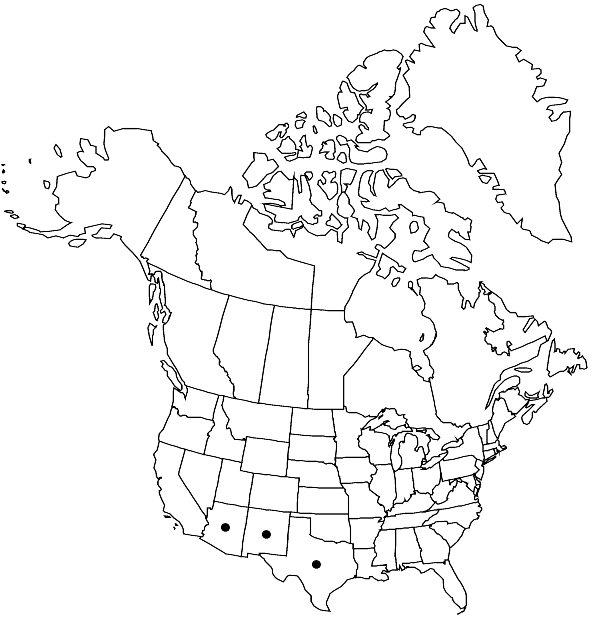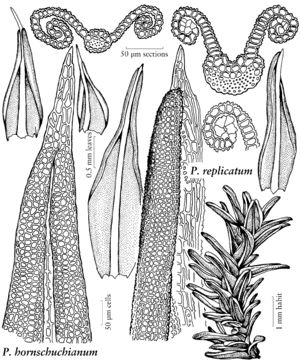Pseudocrossidium replicatum
Phytologia 44: 206. 1979,.
Stems to 1.5 cm. Stem-leaves ovate-ligulate to ovatelanceolate, 1–2 mm, distal margins usually twice-revolute; apex rounded-obtuse; costa ending in an apiculus or short mucro, rarely long-mucronate or short-awned, adaxial surface of costa at mid leaf concave, with (4–) 6 guide cells; distal laminal cells 8–10 µm wide, 1: 1. Specialized asexual reproduction absent. [Perichaetial leaves weakly differentiated, elliptical.] Sporophytes not seen.
Habitat: Soil, limy shale, boulders, lava, canyons, shady banks, bluffs
Elevation: moderate elevations (900-1600 m)
Distribution

Ariz., N.Mex., Tex., Mexico, South America, Africa (Kenya)
Discussion
Pseudocrossidium replicatum is distinguishable from P. crinitum by its usually apiculate apex, twice-revolute leaf margins—these enclosing thin-walled cells, and smaller distal laminal cells, these strongly bulging on both sides though this obscured by dense papillae. It is quite similar to Tortula atrovirens, the basis for an erroneous report of that species from Colorado by W. A. Weber (1973), but differs by its crescent-shaped costal section (rounded in the latter species) and thin-walled leaf marginal cells. Pseudocrossidium replicatum is characteristic of the Latin American cordillera and arid Mexico reaching north to the western United States.
Selected References
None.
